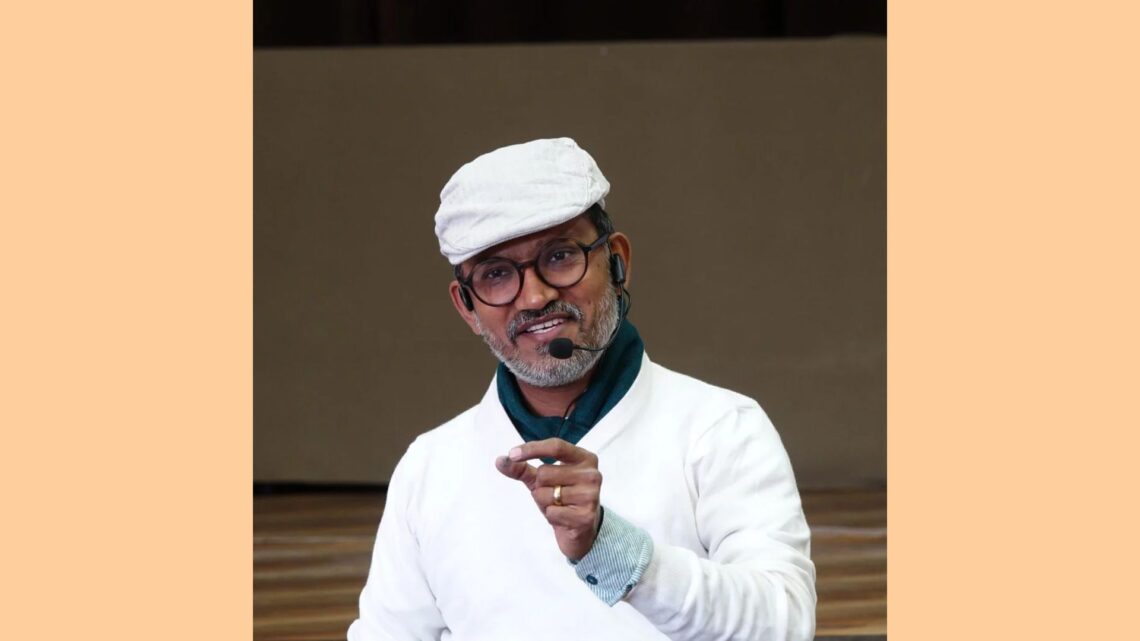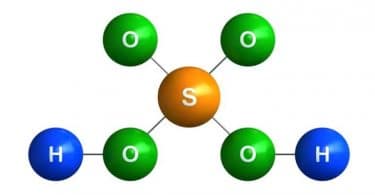In 2001, when Dr. Rajan Sankaran discovered the sensation method, it was a big leap or quantum shift in the science of homoeopathy. He could actually play with the system that he had found, but this was not true for others. Many homoeopaths couldn’t sustain this spurt of energy from the master and started to run away or criticise him, whereas many others followed him like sheep. However, during that time of upheaval, many stood with individuality and courage, and they supported the system with various contributions that filled many gaps. Dr. Dinesh Chauhan was one of those supporters.
There are no coincidences. I was reading a book called The Alchemist by Paulo Coelho when Dinesh invited me to write about my views of the case witnessing process for his book. There is a lot more to The Alchemist, but one important quote from the book caught my attention in particular. I read: “in the hand of the alchemist lies a secret that it can turn base metal into gold.” This quote could be a description of Dinesh. Working with him, which is actually a privilege for me, I realised that he brings so much clarity and surety to every case. He explains each and every step of his case through philosophy, explaining why he had asked a particular question. He also deals with ease in children’s cases and elicits sensation and energy patterns. His understanding in case-receiving is so comprehensible and effortless that if any homoeopath applies it sensibly, he will find great results.
In the case witnessing process, Dinesh discovered three steps: passive, active, and active-active. Initially, many homoeopaths struggled with the sensation method; especially, with the chief complaint. Many homoeopaths had lost flexibility and became naively attached to looking at the path of chief complaints. There was much anxiety experienced by those homoeopaths, which often led them to push their patients towards the direction of the chief complaint, along with other areas of the case, in order to elicit sensation. It became a tug-of-war situation for homoeopaths, but these three steps outlined by Dinesh cleared up many doubts and reduced much anxiety about how to get the correct vital sensation in a given case. The beauty of Dinesh’s technique lies in these three steps—every thread or every bit in a case gets connected and the confluence point emerges naturally.
Since I also teach, I have realised that this process of case witnessing appeals to homoeopaths from many different schools of homoeopathy. This process is like an “individual way to individualisation”.
All cases don’t require the same type of case witnessing techniques. As Dr Hahnemann has said, the first principle is the law of individualisation. We cannot apply the same case-taking techniques to all patients. Each case demands a different technique, depending on the patient’s nature. One should not analyse or interpret any data from the patient’s knowledge. Whatever is, is. It is “is-ness” and not “should- be” or “could-be” that is important. That is what Dinesh says: “Case taking is a tailor made designer approach”. Your patient is the actor, director, producer, and everything; you are just like a spot boy; wherever he stops, you shine the light.
Aiming at individualisation, Dinesh segregates the case-witnessing process into three different parts.
1) Passive case witnessing:
Passive case witnessing is where you listen to the patient without altering his natural flow. That is what Dr. Hahnemann refers to as the “unprejudiced observer”. Dinesh says that the first part of case witnessing is very important. To find the patient’s unique centre, we need to create a silent space, and, for that, we need to be passive. Dinesh’s emphasis in passive case witnessing, which is the first part, is to achieve the goal of individualisation. He puts stress on “being passive, while at the same time being alert”. Passive, so that our knowledge doesn’t come in between, and alert, so that you receive everything from the patient without shifting his natural flow. Whatever is inside should come outside in the way that the patient wants to tell you; therefore, whatever questions you pose should not alter this flow. In the passive phase, we have to take note of all the characteristic verbal and non-verbal expressions of the patient, as well as what the patient is knowingly or unknowingly keeping in the centre.
We have to remain passive, because to begin with, a patient will more often than not express the common, conscious human talk all jumbled up with a little non-human / nonsense talk. The non-human element initially comes at the spur of the moment; as the case advances, it becomes more and more intense. Finally, at the end, it comes to the forefront and draws everything closer together. Staying alert and passive helps, as this gives direction to a case. When we start to get active, we focus on the focus of the patient. Many homoeopaths ask this question: “Which word should I pick up once I have entered the active phase?” There are so many words that we can feel lost in the jungle. Dinesh suggests that we should scientifically pick up that which is in the centre, which comes up again and again in two-to-three different areas not related to each other, and in a different time zone. This is what Dinesh defines as the focus of the case. If a patient expresses something that is present in his chief complaint or dreams, and if he speaks about the same thing in relation to his childhood, it means this is the focus of the case.
If a patient gets stuck halfway, you can ask open-ended, non-leading questions, so that the flow does not change. Dinesh maintains flexibility in applying the method. There are some cases where the patient’s level of experience is very low. For instance, wherever the pathology is high or the level of experience is low, in such cases, Dinesh suggests, we should become active from the beginning and scrutinise different subconscious areas (dreams, childhood, imagination, and incidents that have had a deep impact on the patient). The aim here is to find the focus of the case in all these areas, so that one is very sure of the focus and can become active with the focus.
2) Active case witnessing:
In this part of case taking, you ask questions leading in a particular direction (which the patient has, consciously or unconsciously, decided for us). Still, you remain open to where your patient will further lead you. The questions that you select from the first part must activate the patient’s imagination. This inquiry, more often than not, will link and envelop the other irrelevant facets, too. During the process, we see what is known as “internal consistency.” If not, then the physician will allow further voluntary narration and only then be at liberty to ask more precise questions, after picking up the vague / irrelevant aspects from the new information. In this way, he must first completely understand the subconscious aspect before going beyond it into the complete unconscious.
Often, every aspect of the first part starts to unite everything. Another way of putting it is that the many gaps in the case get filled up and the complete pattern emerges at the subconscious level; then, the confluence point (the sensation pattern) will start appearing. You can say that you reached very close to the global sensation.
3) The Active-Active case witnessing process:
The aim of the third part of the active focus is to reach at the unconscious, pure self—the quintessence or source level of the case. Here, you start with the focus that you established after you had finished the second part. Now you know where the ultimate energy pattern lies in the case.
The physician needs to identify the internal consistency in the total information; only then is the inquiry complete. Once the unconscious has been unfolded and encountered, the narration on the part of the patient more often than not gains a kind of momentum, similar to that of a pure self. The whole phenomenon of narration gears the individual’s psyche up to reach the point where the “subconscious inhibiting the unconscious” is itself inhibited.
Here, the physician plays an active role and does not allow his patients to wander anywhere other than toward the final pattern. Now, no story, no situation, and no thought can block any of the roads which lead your patient back to conscious levels. At this final point, you can ask the patient to further describe the process and the whole phenomenon step by step. Once the patient has finished with the process, ask him to describe everything once again until he doesn’t add any new information.
In some cases, as a result of close contact with his unconscious self, the patient may even mention the details or finest qualities of the source which he is going to receive. If he does, it is just the icing on the cake! Thus, in the active and active-active, the flow is directed to one specific direction—towards understanding the complete altered pattern, with the natural language of the substance that the patient is going to receive.
Once the process is complete, you take the patient to a level where he temporarily becomes aware of his entire problem / phenomenon right in front of you; that is the level where the healing pause is given by you.
This process of case witnessing has helped me greatly, and I use it in all my cases. Through this process, which does not allow the conscious mind to take over, most of my patients (including homoeopaths) reach the core of the disturbance and are able to describe the source language; some also give the name of it.







Hello,
I would say, lot of contemporary homeopaths do not study Hahnemann’s work deeply/properly and come up with something new. Its more of a propaganda and a way to get fame and possibly make money. It all comes down to how well you sell it. Homeopathy being a science only 200 years old, its very easy to come up with something new and publish around it. All these people do not understand that they are creating a lot of confusion among scholars and I have seen people blindly following new methods for years and then regretting it as these methods would work 30% of the time. They present ideas and examples in seminars and books like a miracle. They all publish success stories, but what about the cases they have messed up. They all claim that Hahnemann also changed his own methods all the time, but what they don’t know is that he brought Homeopathy close to perfection. All these years they have not been able to come up with other potentization methods and or a better approach. I have learned my lessons hard way, I have been to big names and forget about practicing homeopathy, they do not even understand posology properly.
Homeopathy being a science spiritual in nature, it is very difficult to perceive it in a logical sense and lot of contemporary homeopaths are practicing or promoting it in allopathic mold. Like if the guy has a theme/sensation of suffocation, give him Arg Nit, without considering the totality of the case and further messing it up. Its like the guy has fever, give him Tylenol. On top of it they have categorized feelings/sensations/behaviors in terms of kingdoms and they give the remedy from that kingdom only, which would not work all the time. First of all these people are not GOD who would exactly know what belongs where. Every time a homeopath cures a case there will be some symptoms cured which are not covered under the remedy proving/MM. So categorizing a remedy does not make sense as the remedy has more potential that what comes out in the proving. There is plenty to be uncovered, but I believe the right method at the moment is that of Hahnemann’s. They do claim a lot of success stories and people who follow them also agree with it. They don’t think deeply that the meaning of cure for a common man is to get relieved of a condition they have. So, for a common man Allopathic medicines are also curing them of their problems. Similarly, if you prescribe strong misamatic remedy(ies), it make changes in the person. That doesn’t mean the person is cured unless the case is followed up to the point of true cure.
Lot of times these people are experiencing an elephant blindfolded. So one guy touches the legs and says it’s a pillar, other touches the tail and says it’s a rope and so on.
None of these guys have done any research in a scientific fashion. I think with the advent of technology there is more room for doing research, like coming up with methods to analyze energy patterns of a person(using saliva/blood/urine) and finding exact energy pattern in a remedy. If a method like this can be devised, it will completely change the way medicine is practiced and human race will be a happy, peaceful and blissful race.
I think we should first study Hahnemann’s work deeply.
It is so true that whatever these guys talk about is already there in the organon. These people say it differently with lot of masala(spice) and attain fame. All this concepts about sensation, other song within a person, etc is just a way of saying and presenting things differently. Sankaran presents his fictional ideas in a spiritual manner with miracle stories to support it.
Hope it helps and open eyes of some people who follow blindly without even thinking homeopathy in a logical and spiritual sense.
No matter whatever systems people come up with but the moment a system is prejudiced and goes away from totality of a case, It is bound to fail.
respected sj , have u read any of sensation method books.. atleast to criticise properly we need read the things fully.. without reading completely dont or use critic words ..
Thank you Dinesh Sir for such a deep and clear explanation of the case taking